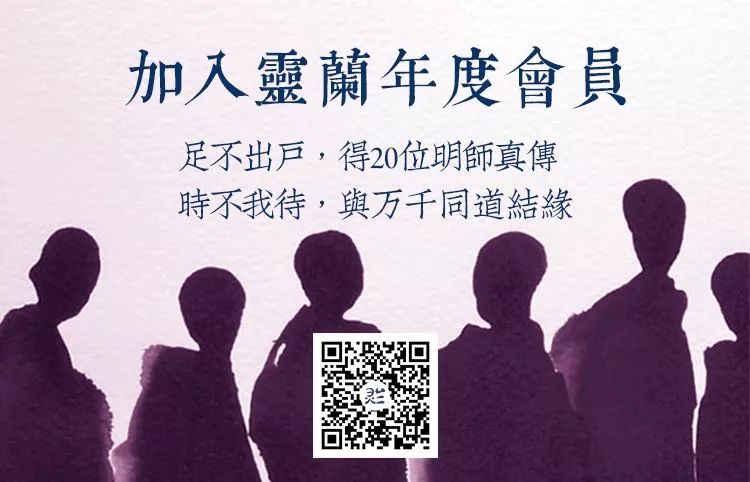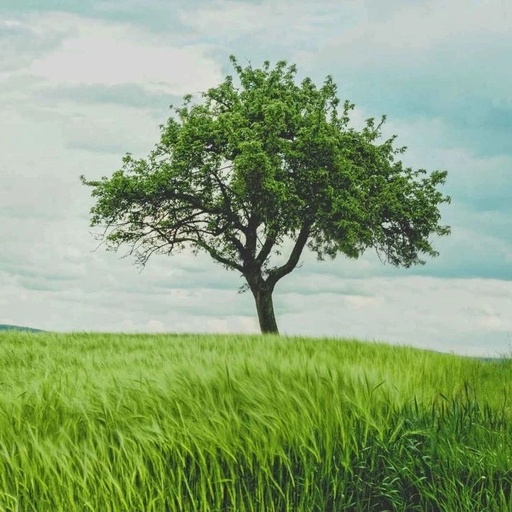Read articles in the morning, and comments in the evening.
Pin the TCM Book Club, click the blue text above.

TCM Book Club Issue 1726
One issue daily, accompanying the growth of TCM practitioners
IIntroduction:This article presents three cases of mixed cold and heat. The manifestation of cold and heat is merely one symptom, and it is often seen in cases of multiple diseases coexisting. This also suggests that when treating such difficult syndromes, the changes in cold and heat may be an important breakthrough point. What are the thoughts of our readers after reading this? Feel free to share in the comments section. (Editor/Ju Ye)

Three Cases of Mixed Cold and Heat Syndrome Treatment
Author/Chen Yifan
Clinical observations of aversion to cold and fever, alternating cold and heat, fixed times of cold and heat, morning cold and evening heat, etc., can be diagnosed accurately, and treatment is not difficult. However, when there is one part of the body experiencing aversion to cold and another part experiencing heat, it is rare in clinical practice. The author has been engaged in clinical practice for over 40 years and has treated three unusual cases of cold and heat, recorded as follows.
-
Heat Above and Cold Below
Patient Luo, female, 52 years old, a rural woman, with a constitution that is weak and timid, often suffers from stomach pain and early morning diarrhea. In early autumn 1968, due to a fall injuring her left foot, the orthopedic doctor prescribed a formula of Revitalizing Blood and Activating Circulation Decoction with Niuxi (Achyranthes) and Ezhu (Curcuma Zedoaria). After two doses, she had watery diarrhea. She then self-purchased Fuzheng Lizhong Wan (Restore the Middle Pill) for oral administration, which stopped the diarrhea, but she felt dizzy, fatigued, short of breath, with cold limbs, poor appetite, and chest tightness. Another doctor prescribed Liuwu Huayang Yin (Six Flavor Rejuvenating Decoction), which was ineffective, and then Ren Shen Yang Rong Tang (Ginseng Nourishing Decoction), but her condition worsened, prompting a home visit.
She appeared fatigued, unable to get out of bed, with a low voice and weak breath. Her upper body was hot and sweating, feeling hot even in light clothing, while her lower body was particularly cold, needing to curl up even in cotton pants. The pulse was thin and weak, the tongue was bright red with no moisture, indicating a deficiency of yin below and excess of yang above, suggesting a significant imbalance of yin and yang. It was urgent to guide the fire back to its source, nourish yin, and descend the rebellious qi. I prescribed Ten Flavor Rehmannia Decoction from the “Qian Jin” (Thousand Gold) text with modifications:
Shu Di Huang (Rehmannia Root) 15g, Huai Shan Yao (Chinese Yam) 12g, Shan Zhu Yu (Cornus) 9g, Mu Dan Pi (Moutan) 6g, Fu Zi (Aconite) 6g, Rou Gui (Cinnamon) 3g, Fu Ling (Poria) 9g, Xuan Shen (Scrophularia) 12g, Bai Shao (White Peony) 9g, Huai Niu Xi (Achyranthes) 6g, Duan Mu Li (Calcined Oyster Shell) 12g.
After two doses, upon re-examination, the symptoms of cold and heat had resolved, and she was able to consume half a bowl of thin porridge. Although her tongue was still red, there was some moisture, and she complained of bitterness in her mouth and dryness in her throat, with slight stomach pain. The pulse was thin and wiry. I modified the prescription to Yi Guan Jian (One-String Decoction) by removing the raw Rehmannia and adding Huai Shan Yao, Shi Hu (Dendrobium), and Mu Li. Three days later, her stomach pain was alleviated, her spirit gradually improved, and her appetite increased. I then prescribed a formula to regulate the spleen and kidney, and after half a month, she fully recovered.
Note: This patient originally had a deficiency of spleen and kidney yang, compounded by the expulsion of stasis and purging, which damaged the stomach yin. The use of Ginseng and Astragalus alternately stimulated the floating yang. With yin deficiency and yang not anchored, it floated upwards, hence the heat above. The floating yang could not settle below, hence the cold below, indicating yin deficiency rather than excess yin, thus the use of Bai Tong Jia Zhu Dan (White Tongue with Pig Gallbladder Decoction) was inappropriate, as it indicated floating yang rather than excess yang, hence the use of Zhu Ye Shi Gao Tang (Bamboo Leaf and Gypsum Decoction) with Aconite was also not suitable (the formula name is Jiji Decoction from “Zhang’s Medical Communication”).
The formula of Six Flavor Rehmannia nourishes kidney yin, with Aconite and Cinnamon to guide the fire back to its source, Xuan Shen and Bai Shao to nourish yin and restrain the liver, working with Rehmannia to counteract the acrid heat of Cinnamon and Aconite. Mu Li and Niu Xi anchor the floating yang and descend the rebellious qi, assisting Shan Zhu Yu to prevent the floating yang from rising excessively. Thus, the dangerous symptoms of heat above and cold below were resolved. Subsequently, it was only necessary to regulate the spleen and stomach, nourish the liver and kidney, ensuring a continuous support over the next two days.
-
Cold in the Abdomen and Heat in the Body
Patient Shen, male, 24 years old, a primary school teacher. Initial diagnosis on April 15, 1998. The patient, in early April 1998, experienced aversion to cold and chills, headache, and body aches. After treatment by local doctors, he took various damp-dispelling and cold-dispelling medicines including Ma Huang (Ephedra), Gui Zhi (Cinnamon Twig), Ling Zhi (Reishi Mushroom), Zhi Shi (Bitter Orange), Qiang Huo (Notopterygium), and Fang Feng (Siler), along with several intravenous infusions of calcium gluconate. His headache and body aches resolved, but the aversion to cold persisted.
For the past half month, he experienced severe aversion to cold in the chest, back, and upper abdomen, needing to wrap himself in cotton to feel slightly comfortable. If he uncovered himself, he would experience abdominal pain and nausea, feeling unbearably cold, while his head, face, and limbs were hot and sweating. A few days prior, he visited a hospital where chest X-rays, liver function tests, and urinalysis showed no abnormalities. His spirit was fair, appetite was poor, with a bitter mouth and yellow urine, and loose stools. The tongue coating was white and greasy with yellow, and the pulse was slow and soft. According to the “Shang Han Lun” (Treatise on Cold Damage), “If there is heat in the chest and evil qi in the stomach, with abdominal pain and a desire to vomit, Huang Lian Tang (Coptis Decoction) is the main treatment for it.” This case of mixed cold and heat, with yin and yang out of balance, made it difficult to warm or clear, and it was particularly tricky. I tentatively prescribed Huang Lian Tang with modifications, with the following prescription:
Xi Dan Shen (Western Ginseng) 15g, Jiang Ban Xia (Ginger and Pinellia) 9g, Huang Lian (Coptis) 6g, Gan Jiang (Dried Ginger) 3g, Gui Zhi (Cinnamon Twig) 4.5g, Da Zao (Jujube) 3 pieces, Yi Yi Ren (Job’s Tears) 15g, Pei Lan Ye (Eupatorium) 12g. Five doses.
On April 24, upon re-examination, he reported significant reduction in symptoms after taking the above formula. Due to the long distance, he did not come for a timely follow-up, but continued taking the original formula for three more doses. The cold and heat symptoms resolved, but dizziness, limb swelling, yellow urine, and loose stools remained. The pulse was slow, and the tongue coating was thick and moist. I modified the prescription to Liujunzi Tang (Six Gentlemen Decoction) with Yi Yi Ren and Pei Lan Ye, and after taking five doses, he was cured.
Note: This patient’s condition arose from aversion to cold. Although the exterior was dispersed, the interior cold remained unresolved, and the stomach yang was constrained, with damp turbidity obstructing the upper and middle jiao, leading to excess yin internally and excess yang externally, hence the aversion to cold in the chest, abdomen, and back, while the head, face, and limbs were hot. This symptom differs from excess yin and yang, but the principle is similar. Cheng Yingmao stated: “This is a case of upper and lower conflict, and the treatment method should also alternate between cold and heat.” The formula uses ginger and cinnamon to warm and unblock, while Huang Lian clears heat. The bitter and acrid combination is used to open the obstruction. Ginseng and jujube support the righteous qi, while Yi Yi Ren drains dampness, and Pei Lan and Ban Xia harmonize and transform turbidity. The ancient formula is applied today, which is quite fitting for the disease mechanism, hence it was effective.
-
Cold in the Front and Heat in the Back
Patient Zhou, female, 46 years old, a farmer, has experienced burning heat in the neck, chest, and back, while the chest, abdomen, and knees have been cold for over six months. After various hospital examinations, blood, heart, brain, and lung tests showed no abnormalities. She came for diagnosis on August 6, 2001. Her spirit was low, sleep was poor, appetite was fair, with occasional slight sweating on her back. The pulse was deep and slow, and the tongue coating was thin, white, and moist. After careful consideration, I prescribed Er Jia Long Gu Tang (Two-Plus Dragon Bone Decoction) with modifications. The prescription was:
Long Gu (Dragon Bone) 12g, Mu Li (Oyster Shell) 12g, Bai Shao (White Peony) 12g, Sheng Jiang (Fresh Ginger) 3 slices, Da Zao (Jujube) 3 pieces, Zhi Gan Cao (Honey-Fried Licorice) 6g, Bai Wei (Cynanchum) 12g, Fu Zi (Aconite) 8g, Dang Gui (Angelica) 10g, Di Gu Pi (Lycium Bark) 10g.
After six doses, upon re-examination, the cold in the knees and shins reduced, and palpitations improved. I modified the prescription by removing Aconite and adding Suan Zao Ren (Sour Jujube Seed), Fu Shen (Poria), and Gui Zhi, and continued with six doses. The cold in the chest, abdomen, and knees resolved, while the heat in the back and waist reduced, and her spirit was still low. The tongue coating was thin and white, and the pulse was weak and slow. I then prescribed Ren Shen Yang Rong Tang (Ginseng Nourishing Decoction) for eight doses to conclude the treatment, and she reported full recovery.
Note: “The back is yang, the abdomen is yin.” “Yang guards the exterior and solidifies, while yin protects the interior and rises urgently.” The syndrome arose from the imbalance of yin and yang, with disharmony between the nutritive and defensive qi. Er Jia Long Gu Tang is essentially Gui Zhi Jia Long Gu Mu Li Tang, removing Gui Zhi and adding Bai Wei and Aconite. Chen Xiuyuan stated that this formula explores the subtlety of yin and yang. In this case, the use of Er Jia Long Gu Tang with Dang Gui and Di Gu Pi is derived from Ouyang Luyin’s modifications, focusing on harmonizing the nutritive and defensive qi. The three formulas emphasize nourishing qi and blood, and also possess the function of nourishing the nutritive and defensive qi.
(Originally published in “Jiangxi TCM” 2005, Issue 12)
Recommended Reading
Liu Duzhou: Seven Mixed Cold and Heat Formulas in “Shang Han Lun”
Cold and Heat Combined Medicinal Pair: Gui Zhi & Dan Pi
|
I Copyright Statement
I Submission Email [email protected] |


